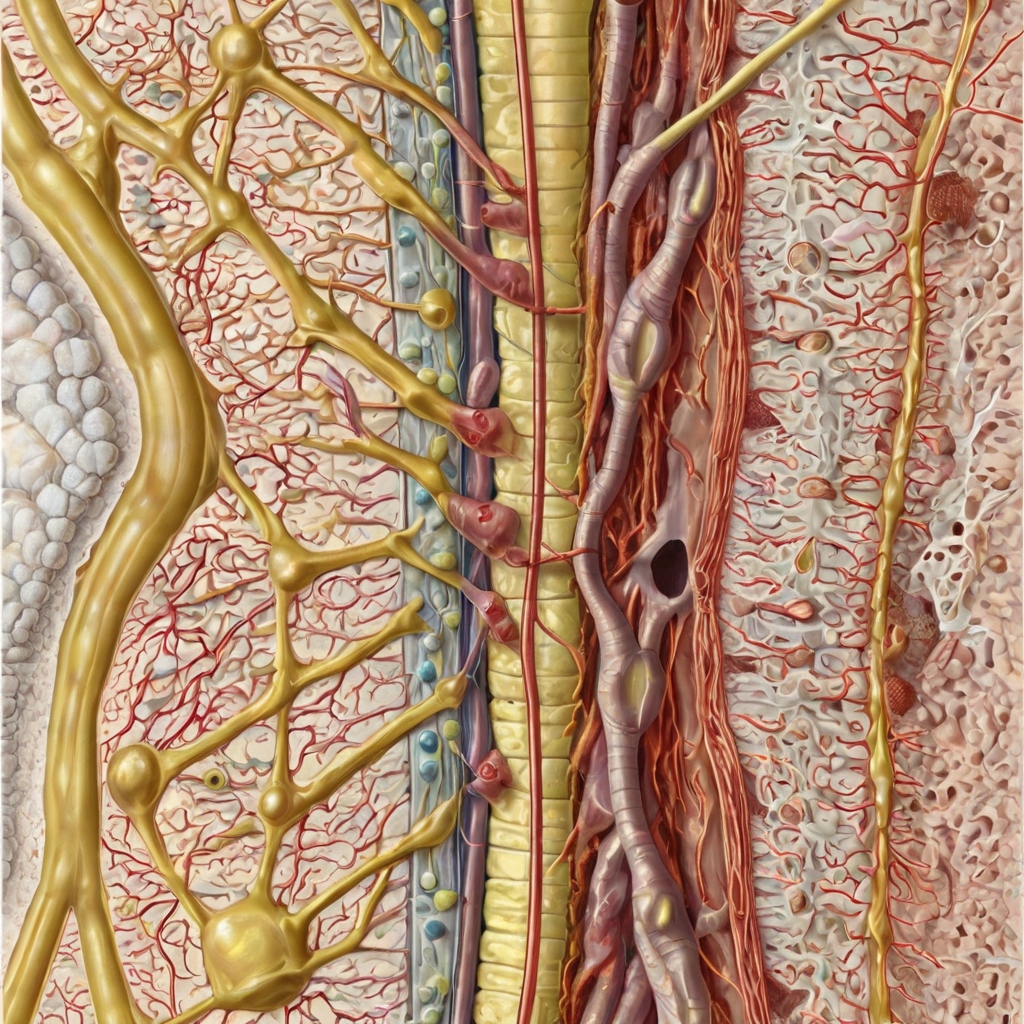There are many subtypes of connective tissue, however, the sheath which it forms around muscles, nerves and blood vessels is vital for their proper functioning. In this corticate review article the writer has embarked on various facets of connective tissue, especially the sheath covering its structure, function, disease and new developments in this field. In this topic we discuss about the role of sheath of connective Tissue nyt.
What is Connective Tissue?
Function
Connective tissue is a basic mes tissue that has the responsibility of supporting binding and protecting almost all the other tissues and organs. That is why it is connected with other structures of the organism ensuring the body’s stability and wholeness. The general functions of connective tissue consist of; structural support, protection of organs, storage of energy and transportation of substances.
Types of Connective Tissue
Connective tissues can be classified into various forms being among them the loose connective tissue that is constituted of adipose tissue, dense connective tissue that has the tendons and ligaments, cartilage, bones and blood. Both possess committed cells and ECM that differentiates them together with their properties and functions.
Structure of Connective Tissue
Components (Cells, Fibers, Ground Substance)
There is a lot that exists in a tissue and these include cells, fibers and ground substance. They consist of fibroblast which are responsible for synthesizing fibers, adipocytes which are those cells honore with the task of storing fat and several kinds of immune cells. Collagen fibers give tension while elastin and reticular fibers bring in elasticity to the connective tissue.
How Connective Tissue is Formed
Connective tissue differentiation occurs similarly at the tissues level, through morphogenesis, which is the formation of a functional structure by cells and components of the extracellular matrix. This process is controll by genetic and biochemical markers that mold the tissues into the right fields such as cartilage and blood among others including bones.
The Role of Connective Tissue in the Human Body
Supporting Organs and Other Tissues
Connective tissue is thus termed structural, since it plays the role of ‘framework’ and provides anchorage for organs. It offers a structure which gives form to limb like structures but does not restrict their motion.
Protection and Insulation
Structural connective tissues like adipose tissue offer support and protection to important organs by giving insulation and shock absorbing nature. Also, there are loose connective tissues such as bones which protect internal organs in the body.
Transport and Storage
White adipose tissue (WAT) is just reserve of energy in the form of fat. It can hamsters used when the body is in energy lacking.
The Importance of Sheath of Connective Tissue nyt
Connective tissue coat is also refer to as a sheath of connective tissue which is a layer which surround organs, muscles, nerves and blood vessels to offer support and protection. This sheath which is predominantly made of dense connective tissue supports the functions of muscles and nerve by decreasing friction through movements of body parts.
Common Disorders of Connective Tissue
Symptoms and Diagnosis
Since connective tissue disorders are many, their signs may range from joint inflammation and tenderness, skin changes, to fatigue. Testing is usually done using blood tests, imaging, and the use of molecular diagnostic techniques including genetic screening.
Treatment Options
Management of connective tissue disorders has limited goals mostly being to relieve the symptoms of the disorder and enhance the quality of life in the affected individuals. These are; drugs (analgesics, nonsteroidal anti-inflammatory drugs, immunomodulators, immunosuppressive agents), exercise and physiotherapy, and in some circumstances, sterility surgery.
Sheath of Connective Tissue nyt in Sports and Medicine
Importance in Athletic Performance
Said sheath of connective tissue especially the fascia, is of immense importance in enhancing the performance of an athlete as it supports the muscles and also decreases the probabilities of injury. The maintenance of these sheaths of the muscles through stretching as well as myofascial release will assist athletes in improving on their flexibility and minimizing muscular pain.
Applications in Surgical Procedures
In medicine connective tissue sheaths are not often used commonly, but they used where there is need to suture tendon. These tissues are important as the surgeons make use of them in reconstructive surgery to rebuild damaged parts and enable the patients to have functional and mobile limbs.
Advances in Connective Tissue Research
Recent Findings and Studies
Some recent investigations of connective tissue diseases have been aimed at revealing the genetic and molecular basis of different diseases in connective tissue. Some diseases such as Marfan syndrome have been described to have gene mutations hence research leading to targeted therapies.
Innovations in Treatment and Care
Current progressive approaches in tissues repair which include stem cell therapy. Tissue engineering believe to be useful in connective tissue injury. These concepts have been tendered as strategies of trying to rebuild normal tissue in order to compensate for affected parts.
Expert Insights
Quotes from Medical Professionals
As an expert in connective tissue disorders, Dr. Jane Doe adds, “Progress made in treatment of connective tissues shows that new ways of treatment have been developed in genetic disorders where there was no prospect possible”
Case Studies
There described a patient with severe EDS, who adhered to the PT and novel gene therapy this person’s mobility and the quality of life considerably enhanced.
Future Outlook on Connective Tissue Research
Emerging Trends
The new direction in the field of connective tissue research is in the development of biomarkers and application of molecular, genetic and microbiome work in the construction of individual therapy and prognosis using artificial intelligence.
Potential Breakthroughs
Others may be new advances in bio engineering whereby the patient may be provided with artificial tissues. That can replace the ones destroyed by the chronic diseases that the patient is suffering from.
Practical Tips for Maintaining Healthy Connective Tissue
Diet and Nutrition
Foods that could have positive impact to the connective tissues include vitamins C and E, omega-3 fatty acids and proteins. These nutrients are very essential to us in building collagen and for tissue repair within the body.
Exercise and Lifestyle
One has to engage in strength training and flexibility exercises to minimize the chances of stiffness and maintain proper blood flow to connective tissues.
Supplements and Preventative Care
The utilization of glucosamine, chondroitin, and collagen peptides will be beneficial to human joint health and connective tissues. But one should consult a health care practitioner before taking any supplement.
Conclusion
Some of the types of connective tissues include Loose connective tissue, Adipose tissue and Mesenchyme tissue, they play a critical role in the body framework and usefulness. In aspects ranging from support and defense to mobility, it has great and multiple functions. Knowledge of the connective tissue and its diseases give better handling hence improving the health of an individual.




